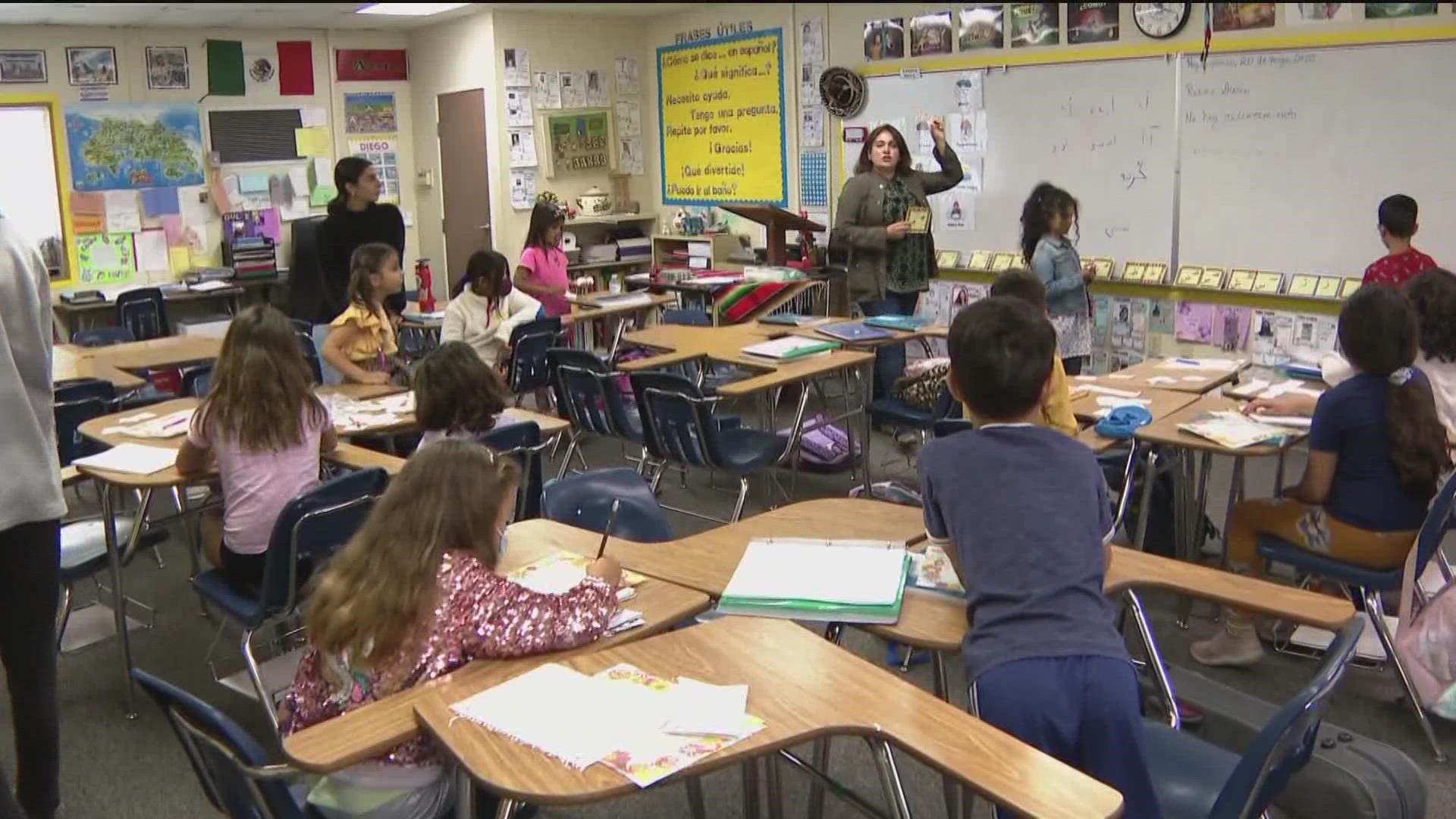SAN DIEGO — Iran is on the Asian continent but no one here would consider themselves Asian. I never did and both my parents are from Iran. So what are we? We went to the Iranian School of San Diego for an answer.
Language keeps people connected.
By learning to read, write, and speak Farsi many of these kids can stay in touch with their relatives in Iran. 8-year-old Ava Pirouzian said, “It’s a great language.”
Also being together at the Iranian School of San Diego gives them a sense of community. “The fun part is the recess," 7-year-old Armin said.
As these kids test their reading skills, they test mine too, “This one is Danesh Amooz. Right? A student.”
About 200 students, or as we’d say in Farsi, “donesh amoozha” spend several hours every Sunday morning at Mount Carmel High, many started as early as age 5.
I ask “Has anyone been to Iran?”
Neekon tells me he’s been to Iran 11 times.
When I ask then what it is like since I have never been, some of the students respond by saying their "food is really good.”
The kids were beaming with pride talking about a country thousands of miles away that they really connect with.
Teacher’s assistant at ISSD, Alireza Ghaeem, said, “It’s a great country it’s really fun. A lot of culture, a lot of art, and warm people.”
Which then leads me to the question – what do they say when people ask where are you from?
Nava Taghavi said, “I tell people I’m from Iran and some people don’t know where Iran is or what Iran is.”
Even though Iran is on the Asian continent, no one says they’re Asian but if they must be labeled by region, there is a push by some to be considered Southwest Asian or North African (SWANA).
In fact, UC Berkeley includes SWANA on their undergraduate applications. To read more about that, click here.
Some would say those would be more geographically correct and modern descriptions compared to being called "middle eastern.”
Principal of ISSD Ali Sadr said, “It’s derogatory and it’s colonial. East of what? Middle of where?”
Ali Sadr is also the Editor-in-Chief of Peyk magazine, researching and writing about Iranians in America.
During the Iranian revolution, many families left their homes in the late 1970s, including mine. That’s when on forms like the census, the government would recognize people from Iran and other surrounding countries as “white.”
Sadr said, “if I go somewhere and say I’m white they’re going to laugh at me. If I go somewhere and say I’m tall they’re going to laugh at me. Probably I’m tall in Iran but here I’m not considered tall here.”
We were all lumped into the so-called “white” majority. But if you ask anyone from that region, most will say they didn’t feel part of the majority.
“So we started pushing people to say “other” and add Iranian-American,” Sadr said.
But as Sadr points out, by marking “other” on the census, we still don’t know how many Iranians or others from that region are in America and in San Diego.
People also miss out on some of the benefits that go towards minorities such as small business assistance, college admissions, various protections, and scholarships.
But many of the Iranians who are here, are working hard to assimilate while also cherishing their culture.
To know Iran is to know the dancing and the music. Atoosa Emami is a dance instructor, and she believes that “we get to show off our culture and all the different regions Iran has.”
“For me, it’s very emotional because I started performing in Iran,” Ila Darafshandar of Ila Dance Academy said.
And now sharing this form of art in the U.S. feels like a privilege.
Mahnaz Khazian said, “For the past 30 years living in the U.S. I’m so happy we have this privilege.”
Because while many hope to be counted in this country, that certainly won’t stop them from proudly leaving their mark.
And on a personal note, I struggled with somewhat of an identity crisis growing up. Who I was in school was different than at home. As I got older, I learned to appreciate the many layers of my identity. Now I look back feeling so grateful for the many hours spent with my family having tea or cha-i, being reminded to only speak Farsi at home, dancing at every party, enjoying the best home-cooked meals, and celebrating all of our holidays and traditions.
I hope to share the same customs with the next generation.
Sadr said, “A lot of kids see they are on TV and there’s nothing wrong with me. I’m part of this group. And that creates this strong community and gives them a sense of belonging and a sense of identity so I appreciate your help (at CBS8.)”
WATCH RELATED: Celebrating San Diego's Hmong community: keeping their culture alive:

